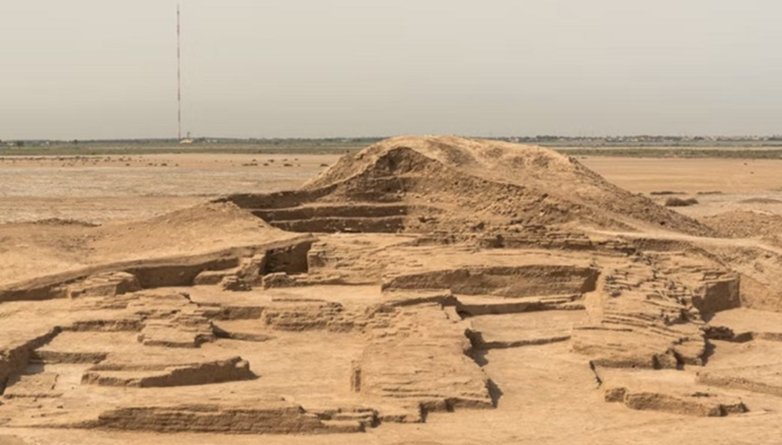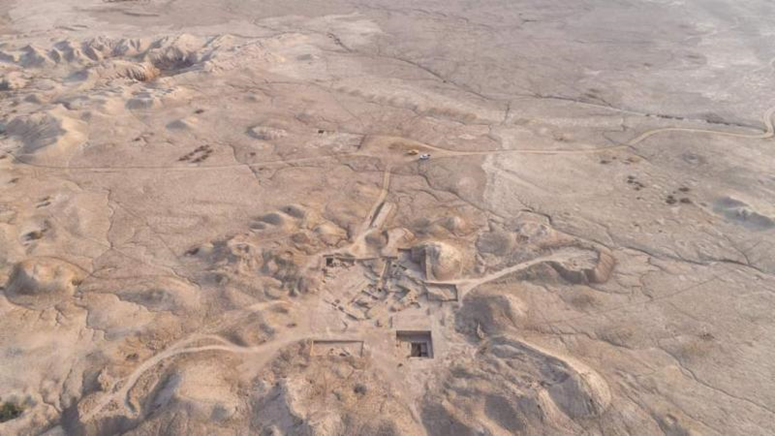Iraq: The discovery of a 4,500-year-old Sumerian temple and royal palace

Archaeologists were able to determine the boundaries of the palace and temple using aerial photographs taken by drones
A team of archaeologists from the British Museum discovered a royal palace and a Sumerian temple, in Dhi Qar Governorate, southern Iraq, that are at least 4,500 years old.
A team of archaeologists, from the British Museum, discovered the ruins of a palace of the Sumerian kings, and a temple of the god of war, hunting and agriculture, "Ninurta", in Dhi Qar Governorate, southern Iraq.
According to the British Museum's statement, "the age of the discovered antiquities is no less than 4,500 years." The statement indicates that archaeologists made these discoveries at the end of last year, in the ancient Sumerian city of Gersu, and it comes as part of a research project implemented in partnership between the British Museum, the American Getty Museum and the concerned Iraqi authorities.
It should be noted that French archaeologists discovered the city of "Girsu" at the end of the 19th century, and its discovery became the starting point for conducting a detailed study of the Sumerian civilization, its language and writing preserved in cuneiform clay tablets. Museum scientists hope the new discovery will greatly expand understanding of the lives of the Sumerians, who established one of the first civilizations in the ancient world.
The Director of the British Museum, Hartwig Fischer, said: "Although our knowledge of the Sumerians is limited, our work at Girsu, and the discovery of the lost palace and temple, hold promise to massively expand our knowledge of this important civilization, shedding light on the past and enriching the future."

Archaeologists were able to determine the borders of the palace and the temple using drones and aerial photographs taken. So far, scientists have found 200 clay tablets among the ruins of the palace, which were handed over to the Iraqi National Museum in Baghdad.
Archaeologists consider the temple of "Eninu-Inurta" (patron of the city of Gersu) one of the most important historical religious temples in Mesopotamia, which was visited by many pilgrims at the time.

Although the city of "Girsu" is one of the most important world heritage sites, it has not been well studied, according to scientists, as a result of the cessation of excavations and excavations due to the conflicts that Iraq witnessed during the past decades, which allowed thieves to loot and steal many of its antiquities.
It is noteworthy that the Sumerian civilization arose on the lands of the southern and central part of modern Iraq (Mesopotamia), about 6 thousand years ago. The Sumerians were skilled farmers, and they were the first to build cities, and they invented the initial writing, from which cuneiform writing later arose.
A few days ago, American and Italian archaeologists discovered a Sumerian "bar" , dating back about 5,000 years, that contains a cooling system that works like a refrigerator, and seats and bowls containing leftovers, at the "Ghash" site, which is closely linked to neighboring cities, such as " Gersu and Negin.
Source:websites

